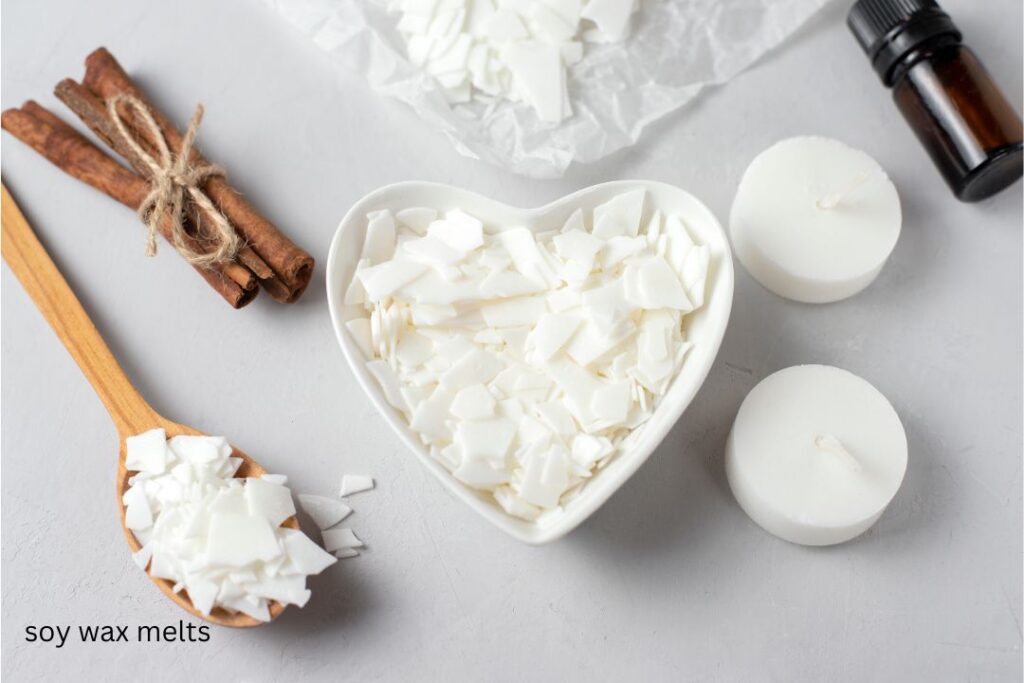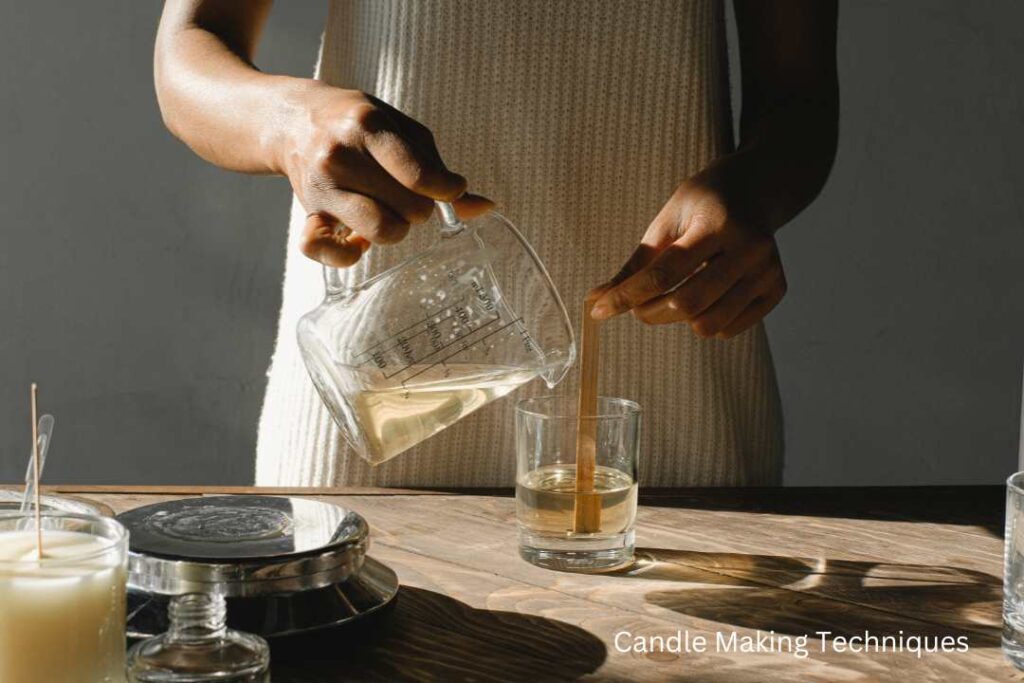Candle making can be a rewarding and creative hobby. Whether you want to create personalized gifts, add ambiance to your home, or explore a new craft, a beginner candle making kit is the perfect place to start. In this article, we will delve into the basics of candle making, help you choose the right kit for your needs, guide you through the process of making your first candle, explore different candle making techniques, and provide essential safety tips. So, let’s dive in and begin your journey in candle crafting!
Understanding the Basics of Candle Making
The art and science of candle crafting using candle jars go hand in hand. To create beautiful and functional candles, you need to understand the materials, techniques, and safety precautions involved. When you light a candle, you are witnessing the transformation of wax and a wick into a source of light and fragrance.

The Art and Science of Candle Crafting
Candle making is a fascinating blend of creativity and chemistry. As you experiment with different waxes, wicks, fragrances, and colors, you’ll unlock the artist within you while also understanding the scientific principles that govern the candle-making process.
Exploring the world of candle making can lead you down a path of endless possibilities. From traditional paraffin wax to eco-friendly soy wax and beeswax, each type of wax offers unique characteristics that can influence the final look and performance of your candles. Understanding the melting points, scent throw, and burn times of different waxes can help you tailor your creations to suit specific preferences and occasions.
Essential Tools in a Candle Making Kit
A good beginner candle making kit should contain all the necessary tools to get you started on your candle making journey. These tools include a melting pot or double boiler, a thermometer, a pouring pitcher, a wick holder, a wick trimmer, molds or containers, fragrance oils or essential oils, candle dyes or colorants, and a heat source.
Aside from the basic tools, investing in additional accessories like wick centering devices, mold sealers, and heat-resistant work surfaces can enhance your candle making experience. These tools not only make the process more efficient but also ensure that your candles turn out beautifully every time. Remember, the key to successful candle making lies not only in the quality of your materials but also in the precision and care with which you handle each step of the process.
Choosing Your Candle Making Kit
When selecting a candle making kit, there are a few factors to consider. These factors include your experience level, budget, desired candle types, and the availability of additional supplies and instructions. Let’s explore each factor in detail. Explore Our Furniture Outlet’s Top 5 Picks: Dive into schuttenworks.com/5-must-have-pieces-you-can-find-at-our-furniture-outlet/

Before diving into the world of candle making, it’s essential to understand the importance of quality ingredients. Look for kits that include high-grade wax, fragrance oils, wicks, and containers. These components play a significant role in the overall look, burn time, and scent throw of your candles.
Factors to Consider When Buying a Kit
If you are a beginner, it is important to choose a kit designed for beginners. These kits usually come with detailed instructions and all the necessary supplies, making the learning process easier. Additionally, consider your budget and opt for a kit that fits within your spending limits.
Another crucial factor to keep in mind is the versatility of the kit. Some kits may only allow you to make a specific type of candle, while others offer the flexibility to experiment with various styles and techniques. Think about your long-term candle making goals and select a kit that will grow with you as you refine your craft.
Different Types of Candle Making Kits
There are various types of candle making kits available in the market. Some kits focus on specific candle types, such as container candles or pillar candles, while others offer a variety of options. Consider what type of candles you want to make and choose a kit that aligns with your preferences.
For those interested in exploring different candle making methods, there are kits that include materials for creating unique designs like layered candles, scented soy wax melts, or even decorative floating candles. These specialized kits can add an extra element of creativity to your candle making journey.

Getting Started with Your Candle Making Kit
Once you have your candle making kit in hand, it’s time to unpack and explore its contents. Familiarize yourself with the tools and materials. Before jumping into your first candle-making project, it’s important to understand the steps involved.
But wait, there’s more to discover! Let’s dive deeper into the world of candle making and explore some fascinating facts about the different types of wax you can use. Did you know that soy wax is derived from soybean oil and is known for its clean and long-lasting burn? It’s a popular choice among eco-conscious candle makers. On the other hand, beeswax, which is produced by bees, has a natural honey-like scent and emits negative ions that can purify the air. It’s a luxurious and sustainable option for those seeking a touch of elegance in their candles.
Unpacking Your Kit: What to Expect
When you open your kit, you may find an assortment of supplies neatly organized. Take the time to read the instructions and become familiar with each item. This will help you navigate the candle making process with confidence.
As you unpack your kit, you might come across some intriguing tools that you didn’t expect. One such tool is a thermometer, which is essential for monitoring the temperature of the wax. Maintaining the correct temperature is crucial for achieving the perfect consistency and preventing any mishaps. Another handy tool is a wax seal stamp, which allows you to add a personal touch to your finished candles. Imagine sealing each candle with a unique symbol or monogram, making them truly one-of-a-kind!

Step-by-Step Guide to Your First Candle
Now that you are familiar with your kit, it’s time to make your first candle! Follow these step-by-step instructions to create your masterpiece:
- Melt the wax: Place the wax in a melting pot or double boiler and heat it until it reaches the recommended temperature.
- Add fragrance and color: Once the wax has melted, stir in your chosen fragrance oil or essential oil and colorant. Mix well to ensure even distribution.
- Prepare the container or mold: If you are making a container candle, ensure that the container is clean and dry. If you are using a mold, prepare it by applying a release agent.
- Place the wick: Dip the wick in melted wax and center it in the container or mold. Use a wick holder to keep it in place.
- Pour the wax: Carefully pour the melted wax into the container or mold, avoiding any air bubbles. Leave some space at the top for the candle to solidify.
- Let it solidify: Allow the candle to cool and solidify completely. This may take several hours or overnight, depending on the type and size of the candle.
- Trim the wick: Once the candle has hardened, trim the wick to about ¼ inch using a wick trimmer.
- Enjoy your creation: Light your candle and bask in the warm glow and aroma!
Now that you have the basic steps down, let’s explore the world of candle customization. Did you know that you can add unique embellishments to your candles to make them truly stand out? Consider incorporating dried flowers, herbs, or even glitter into your wax for a touch of whimsy. You can also experiment with different container shapes and sizes to create a visually stunning display. The possibilities are endless when it comes to expressing your creativity through candle making!
Exploring Different Candle Making Techniques
Now that you’ve mastered the basics, it’s time to explore different candle making techniques. Two popular techniques are molding and pouring.
When it comes to molding candles, the possibilities are endless. You can use silicone molds to create intricate designs such as flowers, animals, or geometric shapes. Molding allows for a high level of customization, making it perfect for those who enjoy detailed craftsmanship. With molding, you can experiment with different types of wax to achieve varying textures and finishes, adding another layer of creativity to your candle making process.
On the other hand, pouring candles offers a more straightforward approach with endless possibilities. Whether you prefer container candles or free-standing ones, pouring allows you to easily create layers of different colors and scents. This technique is perfect for those who enjoy a more fluid and experimental candle making process, where each pour can result in a unique and beautiful creation. Get the scoop on Eye safety at work.

Molding vs. Pouring: Which is Right for You?
Both molding and pouring have their advantages and offer unique candle styles. Molding allows for intricate designs and custom shapes, while pouring offers simplicity and versatility. Consider your preferences and the type of candles you want to create.
Experimenting with Scents and Colors
Part of the joy of candle making is experimenting with different scents and colors. Fragrance oils and essential oils can be combined to create unique aromas, while candle dyes or colorants allow you to add a splash of color to your creations. Let your creativity run wild!
Don’t be afraid to mix scents to create your own signature fragrance blends. Consider the mood you want to evoke with your candles – whether it’s a calming lavender and chamomile blend for relaxation or a zesty citrus mix for an energizing atmosphere. When it comes to colors, think about the aesthetics of your space and how the candles will complement it. From pastel hues for a soft and soothing ambiance to vibrant colors for a bold statement, the choice is yours to make each candle uniquely yours.
Safety Tips for Candle Making at Home
While candle making is an enjoyable hobby, it is important to prioritize safety. Follow these safety tips to ensure a safe and enjoyable candle-making experience.
Precautions to Take When Making Candles
Always work in a well-ventilated area and keep flammable materials away from your workspace. Use appropriate safety gear such as gloves and protective eyewear. Never leave melting wax unattended, and be cautious when working with hot materials. Find out more regarding Procedure: Personal protective equipment.
How to Handle Candle Making Mishaps
If you encounter any issues during the candle making process, don’t panic. Common mishaps include uneven melting, air bubbles, or fragrance and color separation. Research troubleshooting techniques or consult online resources to overcome these challenges.
Congratulations! You are now equipped with the knowledge to embark on your candle making journey. Remember, practice makes perfect, so keep experimenting and refining your skills. Enjoy the process and let your creativity shine through each candle you create. Happy candle making!
